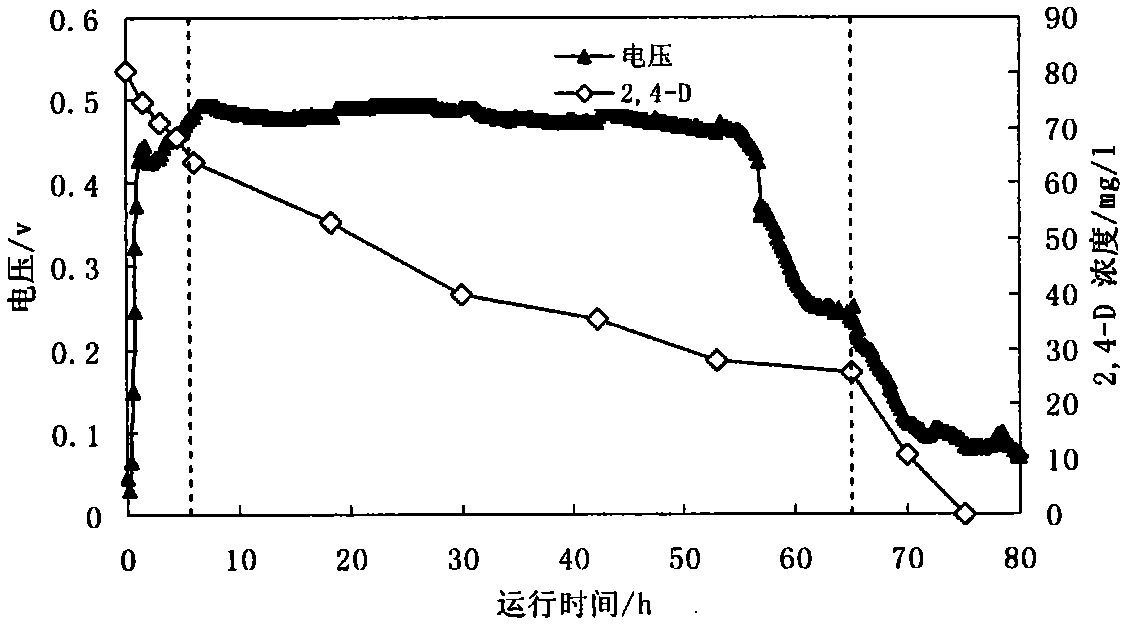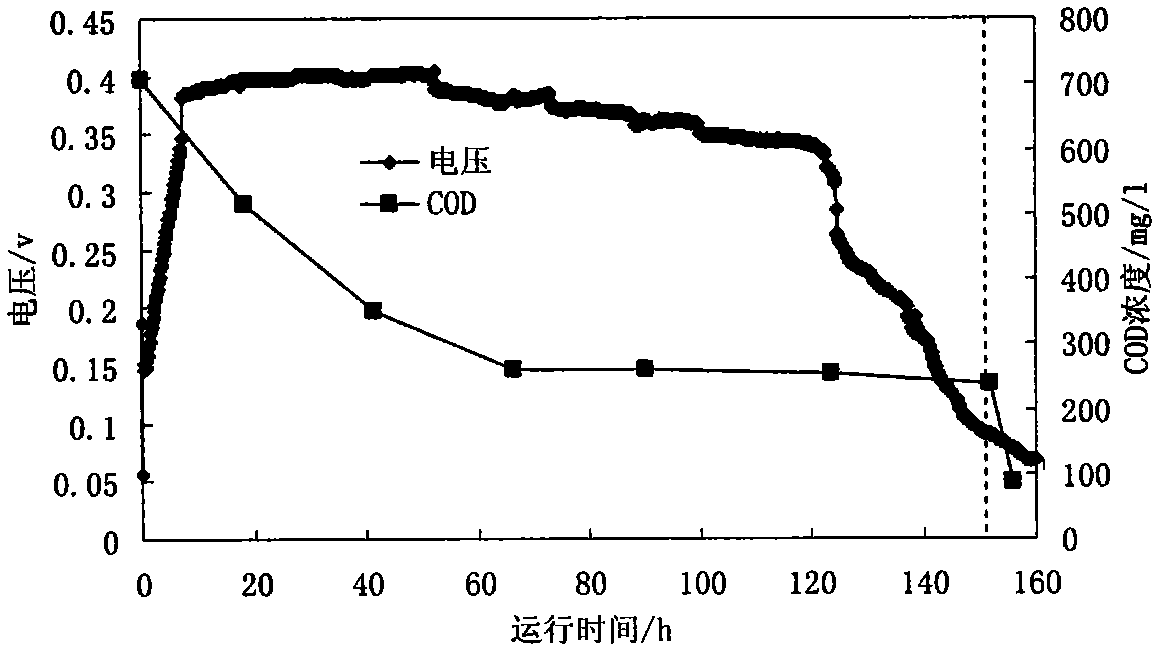Anaerobic-aerobic integrated microbial fuel cell wastewater treatment system
A sewage treatment system, fuel cell technology, applied in the field of environmental protection and resource integration - water pollution prevention and control
- Summary
- Abstract
- Description
- Claims
- Application Information
AI Technical Summary
Problems solved by technology
Method used
Image
Examples
Embodiment 1
[0028] Example 1 Anaerobic-aerobic integrated microbial fuel cell treatment of wastewater containing refractory organic matter
[0029] A high-concentration organic wastewater contains a certain amount of refractory organic matter 2,4-dichlorophenoxyacetic acid as the target substance (2,4-D for short). The activity is inhibited, and the simple anaerobic power generation operation mode is difficult to degrade the 2,4-D in the organic wastewater. The anaerobic-aerobic integrated microbial fuel cell system can effectively remove 2,4-D at the same time Ensure good power production efficiency. The specific implementation steps are as follows:
[0030] (1) Microbial fuel cell system construction: a dual-chamber microbial fuel cell is used, and its specific structure is shown in figure 1 , it includes a cathode chamber, an anode chamber, an anode is inserted into the anode chamber, a cathode is inserted into the cathode chamber, the anode is made of carbon felt, the cathode is mad...
Embodiment 2
[0034] Example 2 Anaerobic-aerobic integrated microbial fuel cell treatment of certain high-concentration organic wastewater
[0035] (1) Microbial fuel cell system construction: a dual-chamber microbial fuel cell is used, and its specific structure is shown in figure 1 , including it includes a cathode chamber, an anode chamber, an anode is inserted into the anode chamber, a cathode is inserted into the cathode chamber, the anode is made of carbon cloth, the cathode is made of platinum-loaded carbon cloth, the cathode chamber and the anode chamber are separated by a proton exchange membrane, and the anode and cathode are separated by a proton exchange membrane. Connect the wire to the external resistor, and connect the load resistor to the data acquisition device.
[0036] (2) Enrichment and cultivation of facultative electricity-producing microorganisms at the anode of microbial fuel cells: use sodium acetate as an easily degradable carbon source to enrich and cultivate the ...
PUM
 Login to View More
Login to View More Abstract
Description
Claims
Application Information
 Login to View More
Login to View More - R&D
- Intellectual Property
- Life Sciences
- Materials
- Tech Scout
- Unparalleled Data Quality
- Higher Quality Content
- 60% Fewer Hallucinations
Browse by: Latest US Patents, China's latest patents, Technical Efficacy Thesaurus, Application Domain, Technology Topic, Popular Technical Reports.
© 2025 PatSnap. All rights reserved.Legal|Privacy policy|Modern Slavery Act Transparency Statement|Sitemap|About US| Contact US: help@patsnap.com



